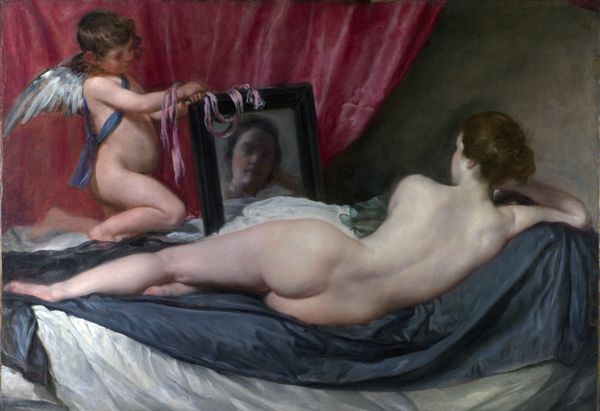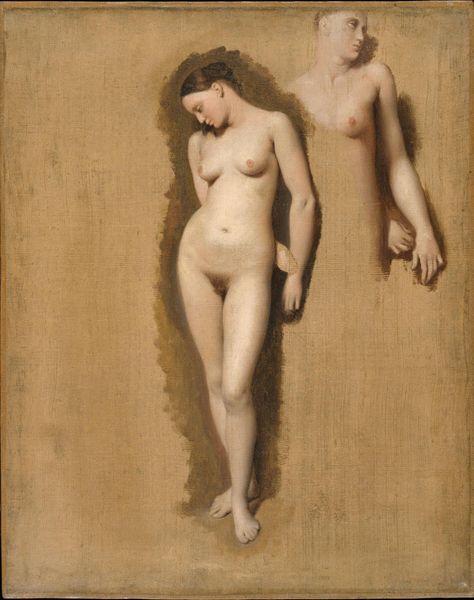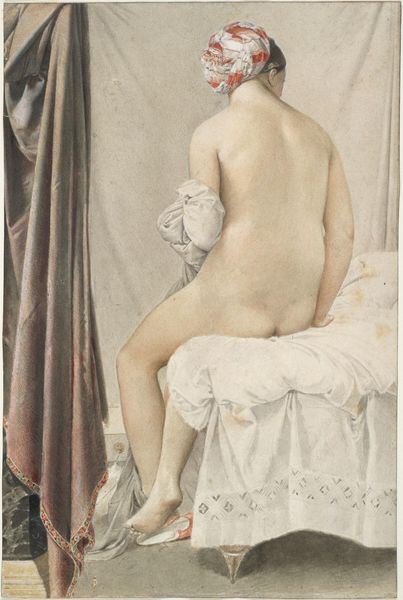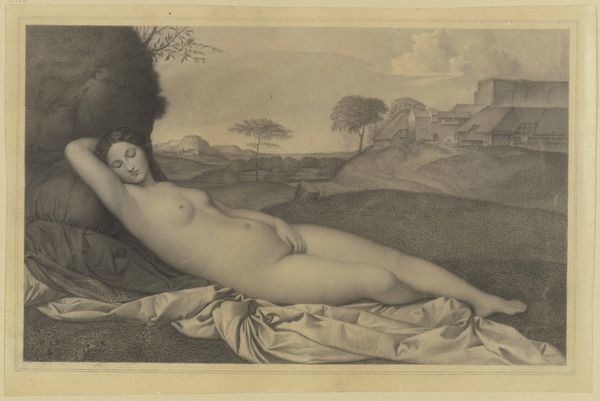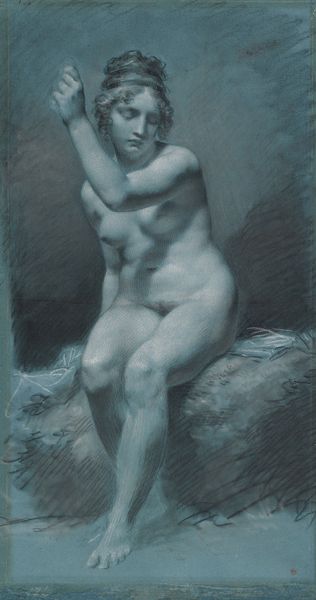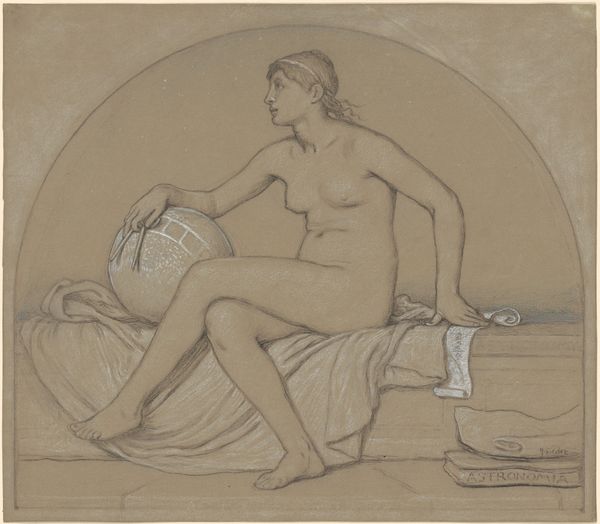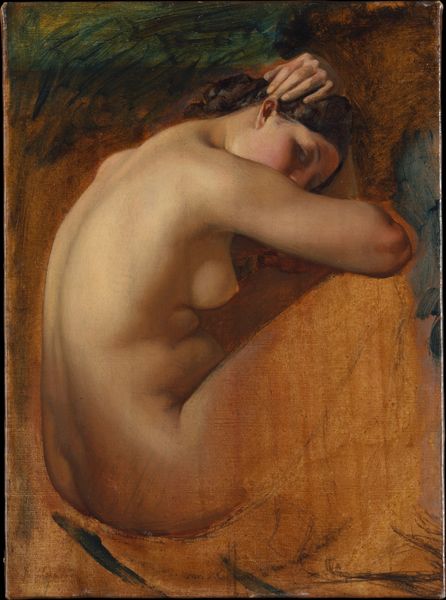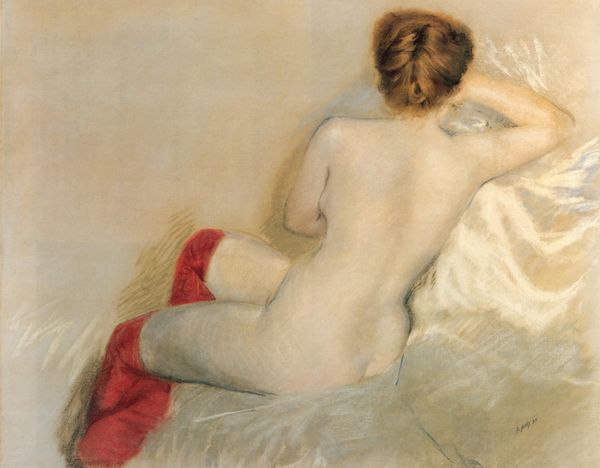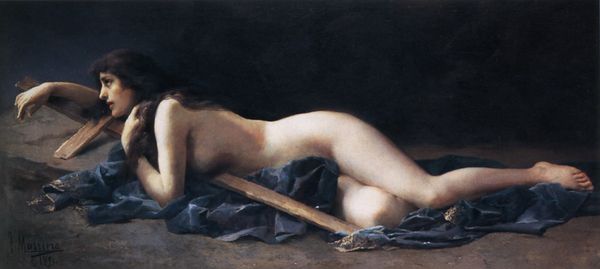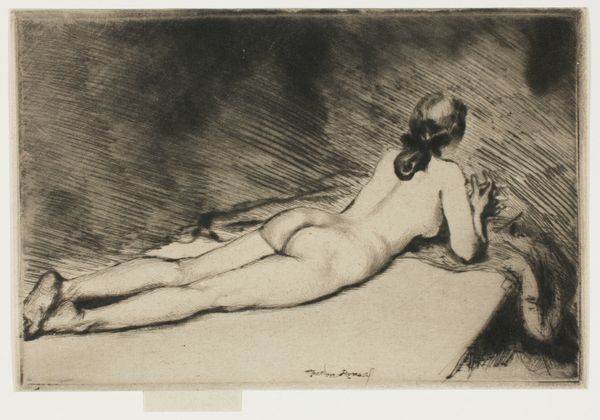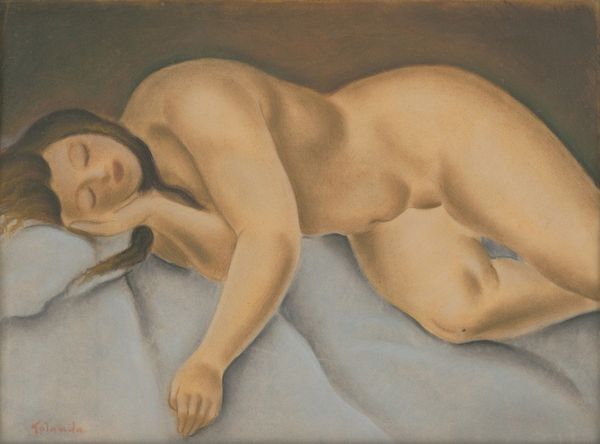
painting, oil-paint
#
portrait
#
neoclacissism
#
painting
#
oil-paint
#
female-nude
#
portrait drawing
#
history-painting
#
academic-art
#
nude
#
portrait art
Dimensions: 32 3/4 x 43 in. (83.2 x 109.2 cm)
Copyright: Public Domain
Editor: So, this is Jean-Auguste-Dominique Ingres' "Odalisque in Grisaille," painted sometime between 1824 and 1834. It's oil on canvas, and striking for its almost monochromatic palette. It gives it a statuesque, almost ghostly feel. What are your thoughts on the composition? Curator: The arrangement of forms is, indeed, central to its reading. Consider the serpentine line that begins at the odalisque's head and winds down to her feet. This line, so prevalent in Mannerist and Baroque art, here assumes a Neoclassical restraint. Notice how Ingres contrasts the smoothness of the figure with the drapery; it guides our eye across the canvas, pausing on textural differences. Editor: It feels like the figure is elongated. Is that intentional? Curator: Precisely. Ingres manipulates the proportions to achieve a certain ideal. The extended back, for instance, departs from anatomical accuracy to create a more flowing, elegant line. He’s not necessarily concerned with realism in the way that, say, Courbet might be. He's concerned with form and beauty in a distinctly academic way. Are you picking up any tensions when viewing it? Editor: I think so; on one hand it evokes classical ideals of beauty, yet the almost photographic quality of the painting, the gray coloring, seems very modern. Curator: Good observation. It's this tension between the classical form and his unique artistic liberties, the restricted color palette, that distinguishes Ingres' work. The "Grisaille" allows him to emphasize the lines and forms. Editor: I learned so much by analyzing the formal qualities. The emphasis on the line and shape provides a way into interpreting art! Curator: Yes, it's through understanding these formal elements that we begin to unlock the richness of the artist's vision. The method truly enables the viewer.
Comments
No comments
Be the first to comment and join the conversation on the ultimate creative platform.
